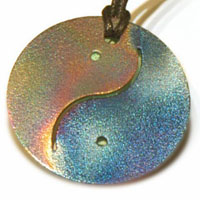|
|
Electromagnetic Fields Exert Effects on and Through Hormones
Posted By Dr. Mercola | January 02 2008
http://articles.mercola.com/sites/articles/archive/2008/01/02/emf-effect-on-hormones.aspx
Several years ago, Cindy Sage hired an electrician to install a new light in her daughter's bedroom. After he left, Sage swept the room with a gaussmeter to measure the magnetic fields present. In some 98 percent of U.S. homes, the average strength of magnetic fields ranges from 0.5 to 0.9 milligauss (mG). Until the electrician's visit, the field in Sage's daughter's room also fell within that range. Afterward, it was 3 mG.
Although that reading is somewhat higher than normal, it falls well below the federally permitted 1,000-mG limit for U.S. workplaces. However, this didn't reassure Sage, a Montecito, Calif based consultant specializing in electromagnetic field (EMF) issues. The workplace limit "is based on the faulty assumption that only thermal, or heat, effects are important as a potential biological hazard," she says.
Sage called the electrician back to find out what he'd done. It turns out that he hadn't wired the light according to the electrical code. When he rewired the room, its average field dropped to 0.2 mG. Electromagnetic fields are invisible lines of force that surround all electric devices and wiring. Concern about the potential health effects of these fields was catalyzed in the late 1970s by studies suggesting an association between childhood leukemia and proximity to certain types of power lines or equipment, such as utility transformers.
Several studies suggest "a doubling of childhood leukemia incidence between 1 and 2 mG" and up to a sixfold increase for exposures between 4 and 5 mG, says Sage. There have even been hints of a breast cancer risk in adults exposed to high fields More recently, several other sources have been added: large currents on the job, poorly grounded wiring, and appliances. Magnetic fields do not necessarily correlate with the size, power, or noisiness of a device. Moreover, there can be a tremendous difference between models of an appliance. Because it's difficult to shield oneself from magnetic fields, the only practical way to limit exposures is to put distance between oneself and the source.
Sage conducts sweeps of magnetic fields in her clients' homes, offices, schools, and hospitals. She deploys electricians to fix any fields that run dramatically above the national norm. Usually, they trace to code violations that prove easy and inexpensive to fix. A 1996 report issued by the National Academy of Sciences concluded that while EMFs appear capable of affecting biological tissues, their link to cancer remains unproven. However, Sage argues that until or unless EMFs are exonerated, avoidance of them is a reasonable policy
Richard G. Stevens of the Department of Energy's Pacific Northwest National Laboratory in Richland, Wash., emphatically disagrees, arguing that it's premature to sweep homes or even to advocate prudent avoidance. That's not because he believes EMFs are necessarily benign. Indeed, he is the father of the 10-year-old "melatonin hypothesis", a theory that exposure to certain EMFs may trigger cancer, especially in the breast, by perturbing the body's natural concentrations of this brain hormone.
He says that many questions remain about what types of fields and features of exposure-such as timing-underlie any risks. The problem with prudent avoidance is that it may make people less willing to act if the risks are later proved more circumscribed. Stevens doesn't challenge the idea that fields can bring about potentially disturbing biological changes. Indeed, new studies describing such effects were presented 7 weeks ago at a U.S. Public Health Service conference he helped organize in Washington, D.C. The studies demonstrated a hitherto unrecognized responsiveness of cells, tissues, and animals - even humans.
Melatonin, a hormone produced by the brain during periods of darkness, is an important natural suppressor of breast cancer cell growth, both in test tubes and in animals. Stevens' melatonin hypothesis holds that because EMFs can depress or shut down melatonin secretion in animals, they may play a role in fostering the growth of malignancies in people.
To test this hypothesis, toxicologist Wolfgang Loescher of the School of Veterinary Medicine in Hanover, Germany, has exposed groups of up to 120 female rats to melatonin-suppressing EMFs of between 100 and 1,000 mG. An equal number of rats received a negligible background exposure of roughly 1 mG; these rats produced melatonin normally. Loescher injected into each rat a chemical that causes mammary cancer, then observed the rats for 3 months.
Compared to the unexposed rats, those in the 100-mG field developed about 10 percent more tumors, animals exposed to 500 mG got 25 percent more, and rats receiving 1,000 mG developed 50 percent more. Tumors also grew as much as twice the size under the influence of EMFs. To understand why, Loescher has focused on the immune system's T cells, a class of white blood cells whose role is to attack and destroy tumors and foreign substances. T cells from animals raised for 3 months in 500- or 1,000-mG fields proved only half as likely as those from unexposed rats to proliferate when exposed to a foreign substance. "This indicates that EMFs indeed suppress the immune system's response to ongoing processes such as tumor growth," Loescher says.
He has also analyzed rats' production of the enzyme ornithine decarboxylase. This enzyme has to be present in large amounts for any cells to proliferate. "If the melatonin hypothesis were true, then when one exposes rats to EMFs, there should be an increase of this enzyme but only in the breast," he says. That is exactly what he's found in EMF studies that he has replicated several times. "To me," he told SCIENCE NEWS, "this is the most convincing data that the melatonin hypothesis may be true."
At the Lawrence Berkeley (Calif.) National Laboratory, Robert P. Liburdy has been probing the underpinnings of EMFs' apparent cancer fostering effects in test-tube studies of malignant cells. He has found that 12-mG EMFs can suppress the ability of both melatonin and the hormone-emulating drug tamoxifen to shut down the growth of cancer cells. In a follow-up study that he described in July at a meeting in Bologna, Italy, the activity of another drug proved even more negatively affected by 12-mG fields. Both tamoxifen and this second drug, which goes by the unwieldy moniker ICI-182780, are synthetic estrogens. They have been designed to dock at a cell's estrogen receptor and block it. In the breast, this can starve most cancer cells of the estrogen that normally spurs their growth. Unlike the ICI drug, which interacts only with the estrogen receptor, tamoxifen can alter the activity of other proteins. Magnetic fields proved more effective against the ICI drug, implying that they interfere with its binding to the estrogen receptor, Liburdy says. If they do, then the body's natural estrogen should be affected similarly. Tests of that possibility are now under way. Liburdy's studies suggest that "a new melatonin hypothesis is emerging," argues Charles Graham, an experimental physiologist at the Midwest Research Institute (MRI) in Kansas City, Mo. The old hypothesis, Graham notes, focused on how much melatonin the body produced and circulated. While reasonable, it downplayed any relevance for humans because "we saw no decrease in melatonin" among people exposed to EMFs. If magnetic fields can make cells less sensitive to melatonin, as studies by Liburdy and others now indicate, then EMFs may yet pose a melatonin-mediated cancer threat, he says.
Graham's own research indicates that magnetic fields can alter two other hormones that affect cancer risk -- estrogen and testosterone. Compared to measurements taken in the presence of negligible background fields, overnight exposure of women to 200-mG EMFs in the laboratory significantly elevated estrogen; other studies have shown that elevated exposure to estrogen over many years can increase a woman's breast cancer risk. In men, the EMFs reduced testosterone-a hormone drop that has been linked to testicular and prostate cancers, Graham's most intriguing data come from experiments with what he terms intermittent EMFs. He and Mary R. Cook, also at MRI, began delivering pulsed exposures that cycle on for an hour and then off for an hour throughout the night. During each "on" cycle, the field switches on and off every 15 seconds. Not only do preliminary studies indicate that intermittent fields "really have an effect," Graham observes, but they emulate real-world exposures, which can vary from second to second in frequency, intensity, and waveform, depending on their source and an individual's distance from it.
In a 3-night study of 24 healthy young men, roughly one-third got steady 200 mG exposures on any given night. Another third received 200-mG fields intermittently, and the remainder slept in the presence of negligible background fields. At the Energy Department's annual EMF Research Review Meeting in San Diego last November, Graham and Cook reported that the intermittent fields and only those fields-disturbed 6 of 10 measures of sleep quality. They not only contributed to broken sleep and shorter periods of deep, dream-stage sleep, they also led to more reports of feeling unrested in the morning.
In an upcoming report in BIOELECTROMAGNETICS, Graham's team links those same intermittent fields to decreased heart rate variability in 77 college-age men. In healthy people, heart rate tends to vary somewhat from second to second in response to the body's need to maintain blood pressure, temperature, and so on. Often, individuals with heart disease exhibit a more stable heart rate -- -an indication, Graham says, "that their heart is no longer as well connected to the nervous system."
While the young men that Graham studied exhibited normal heart rate variability during the nights they were exposed to background fields or constant EMFs, that variability diminished substantially on the night each was exposed to intermittent fields. Graham is planning follow-up studies to probe the long-term health implications of this provocative finding.
"What concerns me," Graham says, is that the public "tends to get so worried about the magnitude of a field. The bigger it is, the worse it's supposed to be." In fact, Loescher has found that very high fields, as well as those below a certain strength, have little impact on tumor growth. Only those across a relatively narrow range consistently foster tumors and other negative health effects.
"We've seen the same thing in our studies," Graham told SCIENCE NEWS. Moreover, he says, it's beginning to appear that a field's magnitude matters less than its intermittency or other features, such as power surges called electrical transients. These surges can pack a big burst of energy into a short period of time. They occur whenever lights or other electric devices turn on, when motors or compressors (such as those in refrigerators and air conditioners) cycle on, or when dimmer switches operate. "Being transient doesn't mean they're rare, just quick," Graham notes. Transients are hard to avoid because they may stem from surges elsewhere-in a neighbor's house or even power lines up the street.
Little research has been conducted to untangle the potential health impacts of EMF characteristics other than field strength, Graham notes, and money for such EMF studies is all but drying up. The two major federal programs dedicated to financing research on EMF effects on health are slated to shut down in October. A program funded by electric utilities through the Electric Power Research Institute will also end this year.
One should expect that "research on EMFs in the United States will take a big nose-dive," says Graham. One ray of hope, Liburdy notes, comes from the recent proliferation of government funds for endocrine-disrupting pollutants. While magnetic fields are a type of radiation, they functionally resemble many environmental pollutants that mimic hormones. In fact, he observes, EMFs may actually fit the definition of an endocrine disrupter better than these chemicals do. That's because magnetic fields appear to elicit their effects by acting on and through hormones, rather than as hormones.
Janet Raloff Science NEWS January 10, 1998 29-31
http://articles.mercola.com/sites/articles/archive/2008/01/02/emf-effect-on-hormones.aspx






